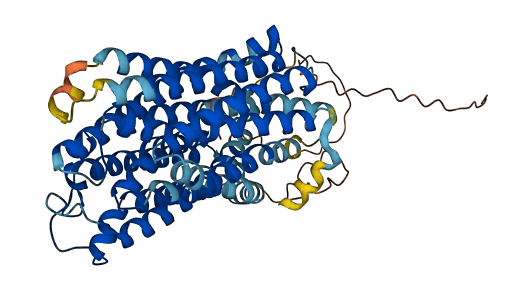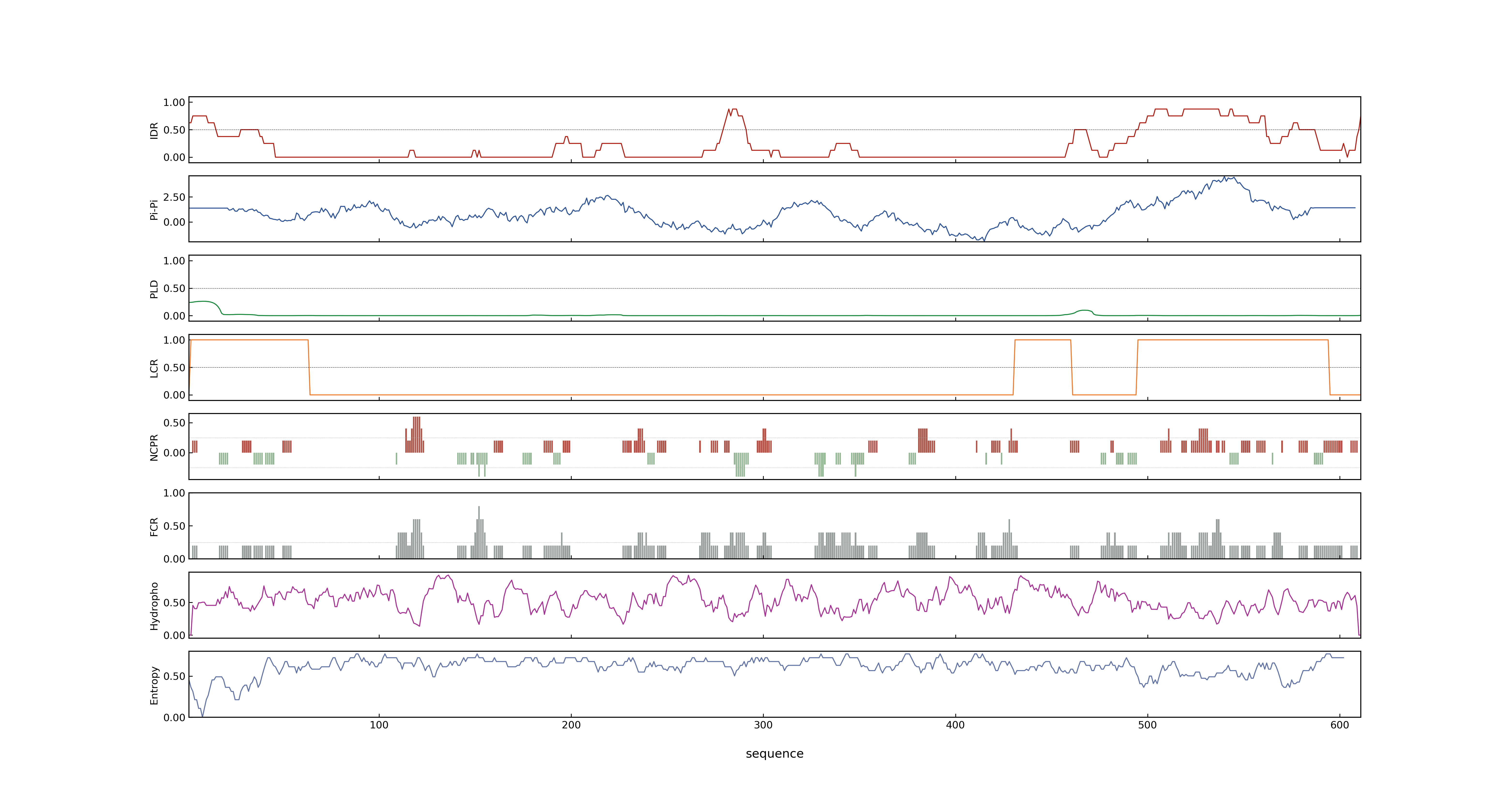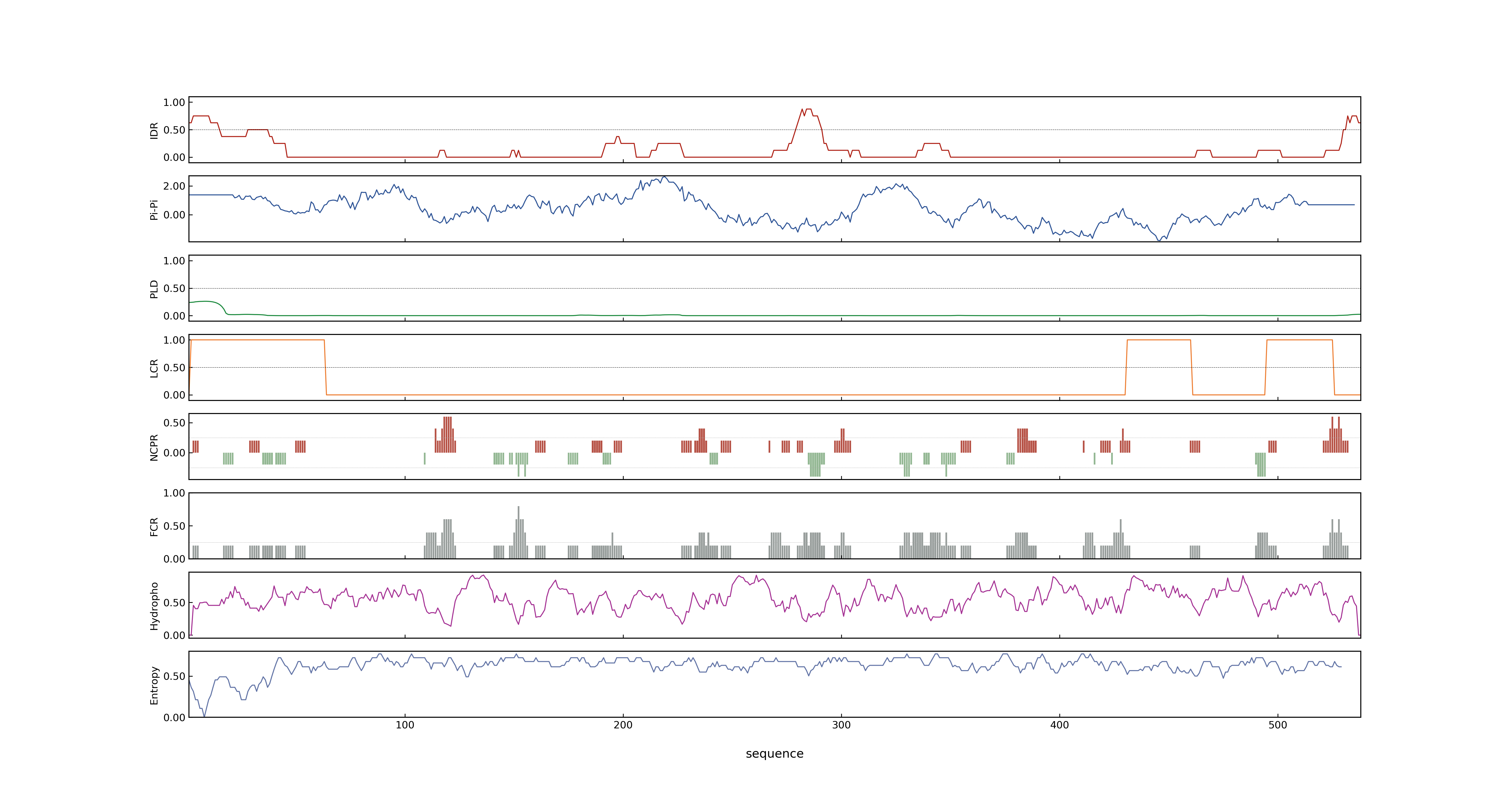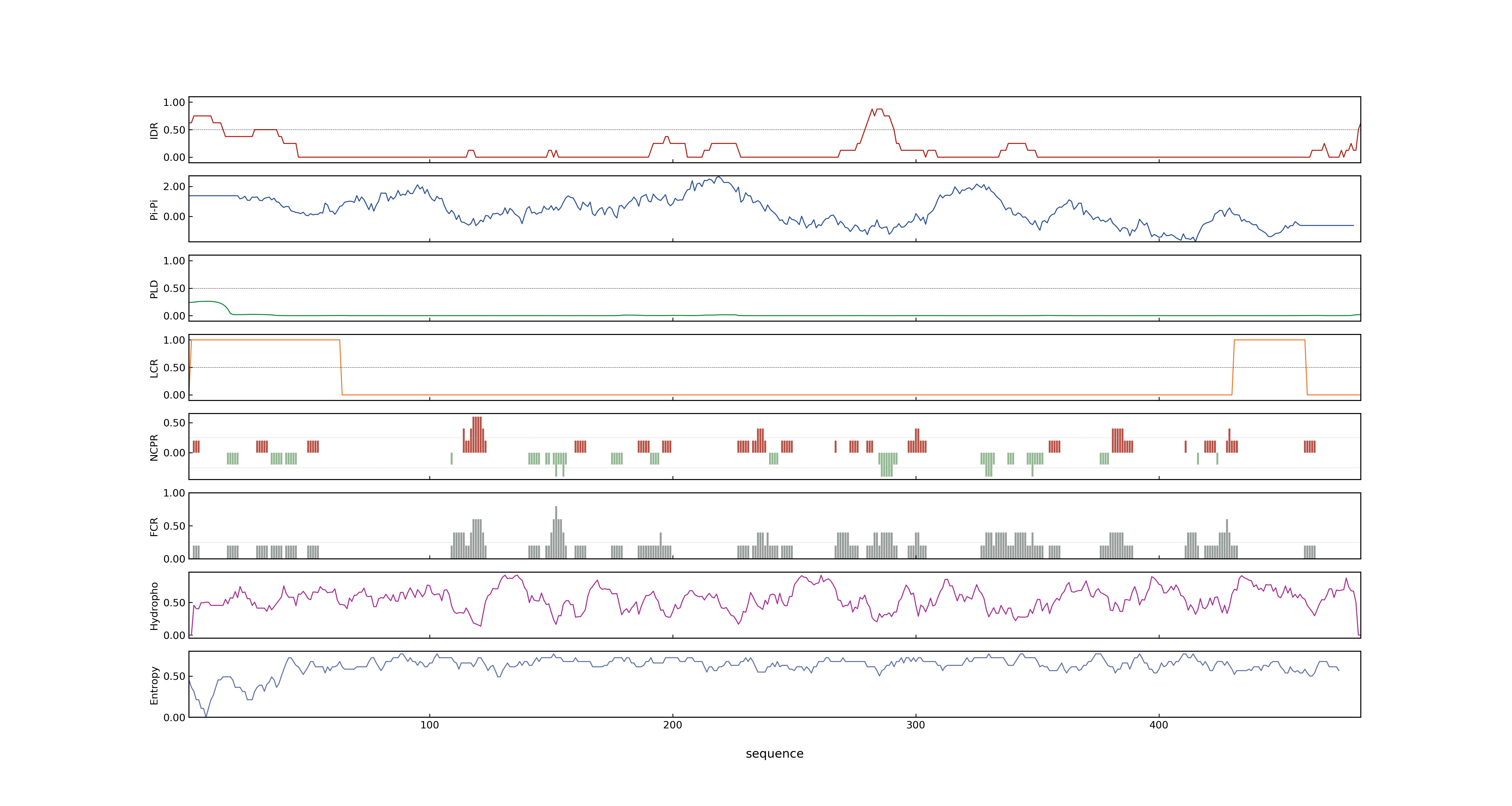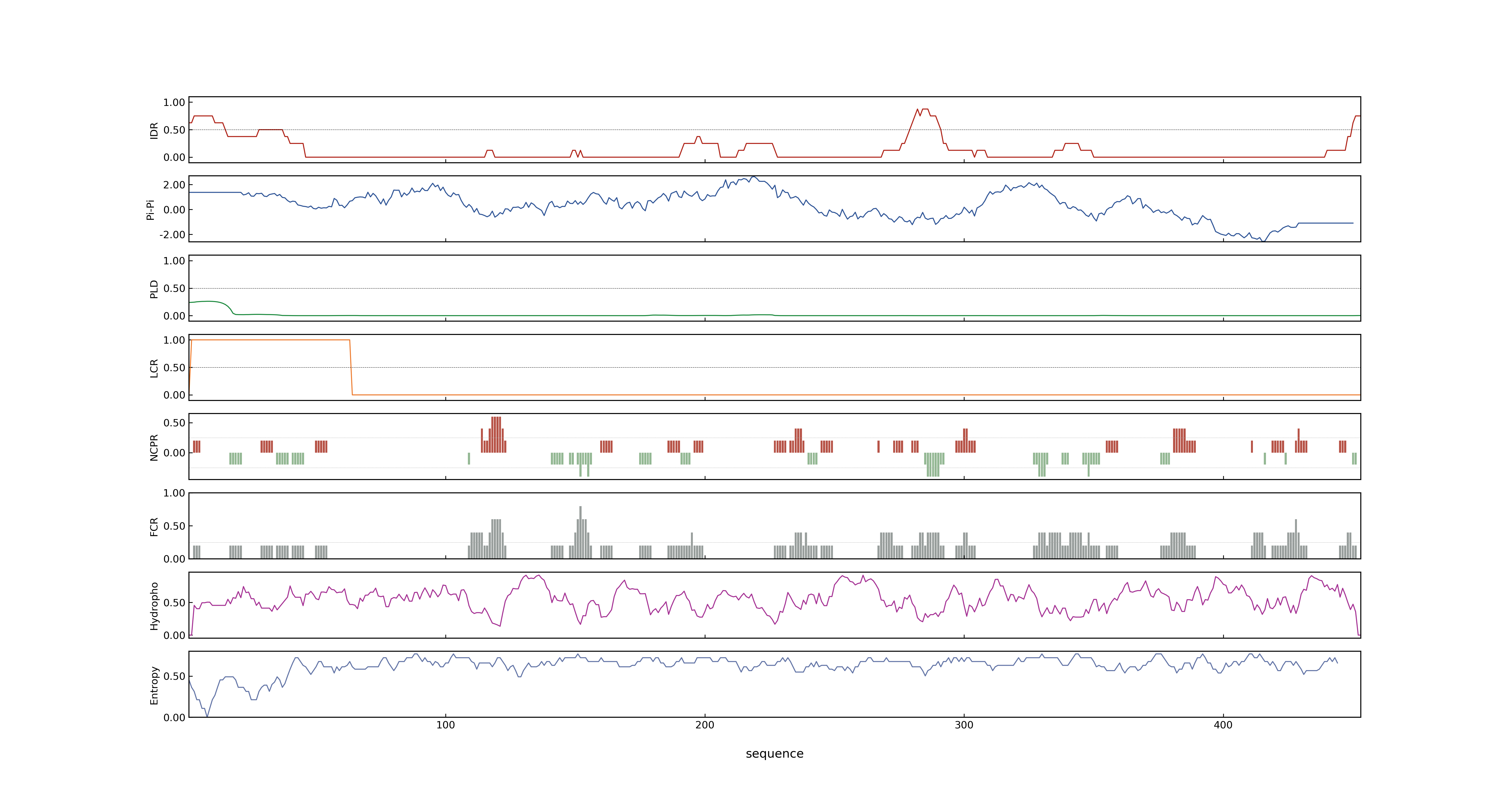- Information
- Symbol: OsSUT1
- MSU: LOC_Os03g07480
- RAPdb: Os03g0170900
- PSP score
- LOC_Os03g07480.4: 0.0676
- LOC_Os03g07480.1: 0.6618
- LOC_Os03g07480.2: 0.2338
- LOC_Os03g07480.3: 0.2237
- PLAAC score
- LOC_Os03g07480.4: 0
- LOC_Os03g07480.1: 0
- LOC_Os03g07480.2: 0
- LOC_Os03g07480.3: 0
- pLDDT score
- 81.78
- Protein Structure from AlphaFold and UniProt
- MolPhase score
- LOC_Os03g07480.1: 0.99773252
- LOC_Os03g07480.2: 0.92715895
- LOC_Os03g07480.3: 0.64626550
- LOC_Os03g07480.4: 0.78629100
- MolPhase Result
- Publication
- Modification of OsSUT1 gene expression modulates the salt response of rice Oryza sativa cv. Taipei 309, 2012, Plant Sci.
- Sugar transporters involved in flowering and grain development of rice, 2001, Journal of Plant Physiology.
- Assimilate translocation and expression of sucrose transporter, OsSUT1, contribute to high-performance ripening under heat stress in the heat-tolerant rice cultivar Genkitsukushi, 2013, J Plant Physiol.
- Arg188 in rice sucrose transporter OsSUT1 is crucial for substrate transport, 2012, BMC Biochem.
- Functionally important amino acids in rice sucrose transporter OsSUT1, 2012, Biochemistry.
- The role of the sucrose transporter, OsSUT1, in germination and early seedling growth and development of rice plants, 2007, J Exp Bot.
- Involvement of the sucrose transporter, OsSUT1, in the long-distance pathway for assimilate transport in rice, 2007, J Exp Bot.
- Disruption of a gene for rice sucrose transporter, OsSUT1, impairs pollen function but pollen maturation is unaffected, 2010, J Exp Bot.
- Antisense Expression of a Rice Sucrose Transporter OsSUT1 in Rice Oryza sativa L., 2001, Plant and Cell Physiology.
- The sucrose transporter gene family in rice, 2003, Plant Cell Physiol.
- Transport activity of rice sucrose transporters OsSUT1 and OsSUT5, 2010, Plant Cell Physiol.
- Rice sucrose transporter1 OsSUT1 up-regulation in xylem parenchyma is caused by aphid feeding on rice leaf blade vascular bundles, 2014, Plant Biol (Stuttg).
- Antisense suppression of the rice transporter gene, OsSUT1, leads to impaired grain filling and germination but does not affect photosynthesis, 2002, Functional Plant Biology.
- Genbank accession number
- Key message
- OsSUT1 encodes a rice sucrose transport protein that is highly expressed in developing grain, leaf sheath and stem after heading, and in germinating seedlings, but only at very low levels in source leaves
- However, starch accumulation during pollen development was not affected by disruption of OsSUT1, suggesting that the sugar(s) required for starch biosynthesis is supplied by other sugar transporters
- Disruption of a gene for rice sucrose transporter, OsSUT1, impairs pollen function but pollen maturation is unaffected
- Wide-field fluorescence microscopy was used to confirm the expression of OsSUT1-promoter::GUS reporter gene in vascular parenchyma associated with xylem elements, as well as in companion cells associated with phloem sieve tubes of large, intermediate and small vascular bundles within the leaf blade, in regions where the aphids had settled and were feeding
- Rice sucrose transporter1 (OsSUT1) up-regulation in xylem parenchyma is caused by aphid feeding on rice leaf blade vascular bundles
- The roles of the rice sucrose transporter, OsSUT1, have previously been examined in filling grain, germination, and early seedling growth
- Involvement of the sucrose transporter, OsSUT1, in the long-distance pathway for assimilate transport in rice
- Using expression analysis, the role of the sucrose transporter OsSUT1 during germination and early growth of rice seedlings has been examined in detail, over a time-course ranging from 1 d to 7 d post-imbibition
- The role of the sucrose transporter, OsSUT1, in germination and early seedling growth and development of rice plants
- OsSUT1 was also present in the coleoptile and the first and second leaf blades, where it was localized to the phloem along the entire length of these tissues, and was also present within the phloem of the primary roots
- Furthermore, seed from some of the T0 population showed a reduction in the rate of germination and growth, supporting the hypothesis that OsSUT1 may also play a role in transporting sucrose remobilized from starch reserves in germinating seeds
- From 14 to 21 days after heading, the expression of the sucrose transporter gene, OsSUT1, was higher in the stem of ‘Genkitsukushi’ grown under high temperature than in ‘Tsukushiroman’
- In addition, the expression of OsSUT1 in the grains of ‘Genkitsukushi’ was significantly higher than in ‘Tsukushiroman’ during the ripening period
- However, by 3 d post-imbibition, OsSUT1 was present in the companion cells and sieve elements of the scutellar vascular bundle, where it may play a role in phloem loading of sucrose for transport to the developing shoot and roots
- There was no difference between antisense and wild-type plants in carbohydrate content and photosynthetic ability of the flag leaves in the vegetative growth stage, suggesting that OsSUT1 may not play an important role in carbon metabolism, at least in these materials
- Six conserved, charged amino acids within membrane spans in rice sucrose transporter OsSUT1 were identified using a three-dimensional structural model based on the crystal structures of three major facilitator superfamily (MFS) proteins: LacY, GlpT, and EmrD
- Functionally important amino acids in rice sucrose transporter OsSUT1
- Antisense suppression of the rice transporter gene, OsSUT1, leads to impaired grain filling and germination but does not affect photosynthesis
- In the current work, the role that OsSUT1 plays in the transport of assimilate along the entire long-distance pathway, from the flag leaf blade to the base of the filling grain, was investigated
- OsSUT1 promoter::GUS (beta-glucuronidase) reporter gene analysis and immunolocalization revealed that both OsSUT1 promoter::GUS activity and OsSUT protein were present in the mature phloem of all the vegetative tissues involved in the long-distance assimilate transport pathway during grain filling
- The rice sucrose transporterOsSUT1 and the monosaccharide transportersOsMST1-3 have been previously characterized
- 4 percnt; identity to that ofOsSUT1and barley transporterHvSUT1, respectively
- We analyzed the function of a rice sucrose transporter, OsSUT1, by using antisense rice
- Antisense Expression of a Rice Sucrose Transporter OsSUT1 in Rice (Oryza sativa L.)
- Transport activity of rice sucrose transporters OsSUT1 and OsSUT5
- Unlike the wheat orthologue, TaSUT1, which is thought to be directly involved in sugar transfer across the scutellar epithelium, OsSUT1 is not expressed in the scutellar epithelial cell layer of germinating rice and is, therefore, not involved in transport of sugars across the symplastic discontinuity between the endosperm and the embryo
- Arg188 in rice sucrose transporter OsSUT1 is crucial for substrate transport
- Assimilate translocation and expression of sucrose transporter, OsSUT1, contribute to high-performance ripening under heat stress in the heat-tolerant rice cultivar Genkitsukushi
- Expression of OsSUT1 in pollen was confirmed by a promoter-GUS fusion assay
- The physiological function of OsSUT1 in pollen was further investigated using retrotransposon insertion mutant lines
- Their progeny segregated into SUT1+/- and SUT1+/+ with the ratio of 1:1, suggesting that the pollen disrupted for OsSUT1 is dysfunctional
- The role of the sucrose transporter OsSUT1 in assimilate retrieval via the xylem, as a result of damage to and leakage from punctured phloem was examined after rusty plum aphid (Hysteroneura setariae, Thomas) infestation on leaves from 3-week-old rice (Oryza sativa L
- This hypothesis was tested using antisense lines of the salt responsive OsSUT1 gene in the salt sensitive Taipei 309 cultivar
- Two independent OsSUT1 lines with an antisense inhibition similar to the naturally occurring salt induced reduction of OsSUT1 gene expression showed these phenomena but not a more extreme antisense inhibition line
- Modification of OsSUT1 gene expression modulates the salt response of rice Oryza sativa cv. Taipei 309
- On the other handOsSUT1 was expressed at the early stage of the grain development, suggesting a different physiological role compared to Os SUT2
- While the homozygote of disrupted OsSUT1 (SUT1-/-) could not be obtained, heterozygote plants (SUT1+/-) showed normal grain filling
- Severe phenotypes correlated with a reduction in OsSUT1 transcript level in filling grain
- Of great interest was up-regulation of OsSUT1 expression associated with the xylem parenchyma cells, abutting the metaxylem vessels, which confirmed that OsSUT1 was not only involved in loading of sugars into the phloem under normal physiological conditions, but was apparently involved in the retrieval of sucrose leaked into the xylem conduits, which occurred as a direct result of aphid feeding, probing and puncturing of vascular bundles
- The up-regulation of OsSUT1 in xylem vascular parenchyma thus provides evidence in support of the location within the xylem parenchyma cells of an efficient mechanism to ensure sucrose recovery after loss to the apoplast (xylem) after aphid-related feeding damage and its transfer back to the symplast (phloem) in O
- Connection
- OsSUT1, OsSUT2~OsSUT2M, Sugar transporters involved in flowering and grain development of rice, On the other handOsSUT1 was expressed at the early stage of the grain development, suggesting a different physiological role compared to Os SUT2
- OsSUT1, OsSUT5~OsSUT5Z, Transport activity of rice sucrose transporters OsSUT1 and OsSUT5, Expression of OsSUT1 and OsSUT5 resulted in sucrose-dependent currents that were analyzed by two-electrode voltage clamping
- OsSUT1, OsSUT5~OsSUT5Z, Transport activity of rice sucrose transporters OsSUT1 and OsSUT5, In conclusion, differences in transport activity between OsSUT1 and OsSUT5 indicate that type II SUTs have a range of transport activities that are tuned to their function in the plant
- OsSUT1, OsSUT5~OsSUT5Z, Transport activity of rice sucrose transporters OsSUT1 and OsSUT5, Transport activity of rice sucrose transporters OsSUT1 and OsSUT5
- OsSUT1, WOX11, Improving rice tolerance to potassium deficiency by enhancing OsHAK16p:WOX11-controlled root development, The improvement of sugar partitioning to the roots by the expression of OsHAK16p:WOX11 was further indicated by increasing the expression of OsSUT1 and OsSUT4 genes in leaf blades and several OsMSTs genes in roots.
- OsNF-YB1, OsSUT1, NF-YB1-regulated expression of sucrose transporters in aleurone facilitates sugar loading to rice endosperm, In summary, the aleurone-specific NF-YB1, with stronger expression at the dorsal side, plays an important role in regulating rice grain filling through activating the expression of SUT1, SUT3 and SUT4
Prev Next
